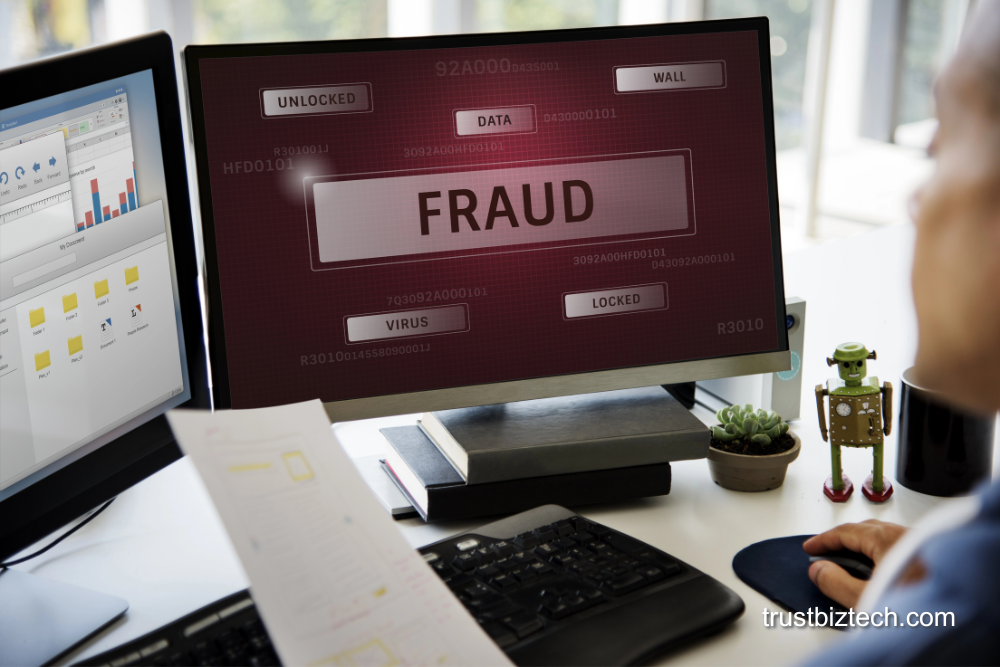Don’t Get Hooked! Recognizing and Avoiding Phishing Scams
- support
- 0 Comments
Phishing scams remain one of the most common—and successful—methods cybercriminals use to breach businesses today. Over 90% of cyberattacks begin with a phishing email. For small and mid-sized businesses (SMBs), the consequences of falling victim to these scams can be devastating, resulting in data breaches, financial losses, and reputational damage.
At Biztech, we routinely help businesses recover from—and, more importantly, prevent—phishing attacks. In this blog post, we’ll break down common phishing examples, explain how to identify red flags, and show you how to keep your business protected with innovative cybersecurity solutions.
What Is Phishing?
Phishing is a type of cybercrime in which attackers disguise themselves as trustworthy sources—such as banks, vendors, or even executives—typically via email, to trick recipients into giving up sensitive information or unwittingly downloading malware.
Phishing scams are becoming increasingly sophisticated, making them more challenging to detect. That’s why knowing how to spot them is critical for any business.
Common Phishing Scams Targeting Businesses
Here are a few real-world phishing email examples that SMBs should watch out for:
- The “CEO Urgency” Scam (Business Email Compromise)
An attacker impersonates your CEO using a spoofed email address that looks legitimate (e.g., ceo@yourcompanny.com vs. ceo@yourcompany.com). The email may request that a finance employee urgently wire money or purchase gift cards.
Red Flags:
– Unusual sense of urgency
– Unexpected financial requests
– Slight misspellings in email addresses
- Fake Invoice or Payment Requests
Cybercriminals pose as vendors or suppliers and send fake invoices or payment requests that appear to be authentic documents.
Red Flags:
– Misspellings or strange formatting
– Unusual banking information
– Attachments with unfamiliar file extensions (.exe, .scr, etc.)

- Account Verification or Password Reset Requests
These emails claim to be from popular platforms (such as Microsoft 365 or Google Workspace), requesting users to verify or update their login credentials.
Red Flags:
– Generic greetings (e.g., “Dear user”)
– Threats of account suspension
– Links that lead to look-alike login pages
- Shared Document from a Colleague
You receive an email (seemingly from a known coworker) with a link to a document hosted on Dropbox, SharePoint, or Google Drive.
Red Flags:
– Unexpected sharing requests
– Poor grammar or unnatural language
– URLs that don’t match legitimate services
How to Spot and Avoid Phishing Scams
Educating your team is one of the most effective ways to prevent phishing. Here are simple yet powerful tips:
Examine the Sender’s Email Address
– Double-check domains for misspellings or inconsistencies.
– Don’t trust display names alone—hover over the sender’s address to see what’s really behind it.
Hover Over Links Before Clicking
– On desktop, hover your cursor without clicking to preview the URL.
– Avoid clicking links with shortened URLs or strange domain names.
Be Wary of Attachments
– Never open attachments from unknown or suspicious sources.
Use attachment security tools to scan documents before opening them.
Trust Your Instincts
– If something seems off, pause and investigate.
– Urgency and threats are common manipulation tactics—don’t fall for them.
Report Suspicious Emails
– Encourage employees to report phishing attempts to your IT or cybersecurity team.
– If you’re using Microsoft 365 or Google Workspace, use built-in “Report phishing” tools.
Actionable Steps to Protect Your Business
Implement these technical and process controls to strengthen your phishing defenses:
- Use Advanced Email Filtering: Invest in an email security solution that filters malicious links and attachments before they reach your inbox.
- Enable Multi-Factor Authentication (MFA): Even if credentials are stolen, MFA can block unauthorized access.

- Conduct Regular Cybersecurity Awareness Training: Teach employees about phishing and conduct simulated phishing tests to enhance their awareness.
- Deploy Endpoint Protection: Robust endpoint security systems detect and block malware delivered through emails.
- Partner with an IT Consulting Firm: Managed IT support providers, such as Biztech, offer proactive threat monitoring and response strategies tailored to your specific business needs.
Stay Vigilant, Stay Protected
Phishing is evolving, but with the proper awareness and process in place, no business needs to fall victim. It starts by recognizing the red flags, educating your team, and implementing the right cybersecurity solutions.
At Biztech, we offer expert IT consulting services and managed IT support designed to keep SMBs safe from phishing, spoofing, and other cyber threats. Whether you need a detailed email security assessment or ongoing protection, we’re here to help.
Contact our cybersecurity specialists today for a complimentary phishing risk assessment. Don’t get hooked—be secure.
Related Posts

- devops
- January 29, 2025
Phishing Attacks are on the Rise: How to Protect Your Business in 2025
As we step into 2025, phishing attacks continue to present a challenging threat to businesses w ..

- support
- September 25, 2024
Boosting Network Security with Segregated Network Solutions
At Biztech, we pride ourselves on delivering top-notch IT solutions tailored to the unique need ..

- support
- July 16, 2024
Protecting Small and Medium-Sized Businesses from Cyber Threats: Strategies and Insights
Every day, when I browse through the news, another report about a high-profile cyberattack grab ..

